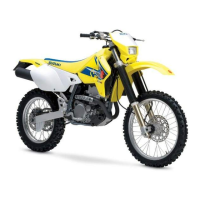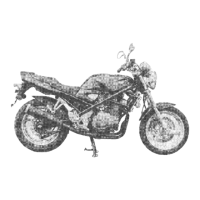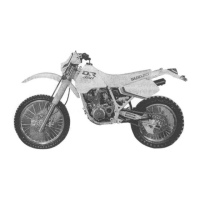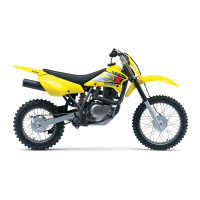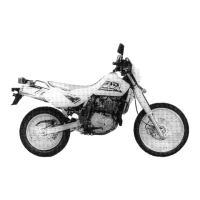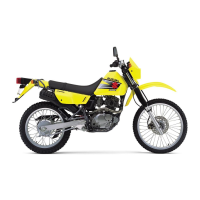FUEL AND LUBRICATION
SYSTEM
4-
11
NEEDLE
VALVE
INSPECTION
If
foreign matter
is
caught between the valve seat and the needle
valve, the gasoline
will continue flowing and overflow.
If
the valve
seat and needle valve are worn beyond the permissible limits,
similar trouble
will occur. Conversely,
if
the needle valve sticks,
the gasoline
will not flow into the float chamber.
Clean the float chamber and float parts with gasoline.
If
the needle
valve
is
worn as shown, replace
it
and the valve seat a new one.
Glean me fuel passage
of
me mixing chamber using
c()lTlJJre~~e<.l
air.
FLOAT HEIGHT ADJUSTMENT
To
check the float height, turn the carburetor upside down.
Measure
me tloat height ®
While
me float arm
IS
Just
contacting
the needle valve using vernier calipers.
Bend the tongue
as
necessary to bring the float height @
to
the
specified
level.
S 09900-20101 : Vernier
calipers
B Float
height
@ : 13.0 ± 1.0
mm
(0.51 ± 0.04 in)
PtSTON
VALVE
CONTROL
SOLENOID
INSPECTION
(FOR E-02, 19, 54)
Test
t
he
piston valve control solenoid for load current using
an
cHllIlletel
.
To
test the piston valve control solenoid, connect a
12
V battery
to
the solenoid coupler.
If
the needle valve of the piston valve
control
so
lenoid does not move, replace the piston valve control
so
lenoid with a new one.
THROTILE
POSITION SENSOR INSPECTION
MeasurE' the
rA~i~t:
;
mr.p.
hF!twF!p.n
thF!
terminals
as
shown
in
the
illustration.
B Throttle
position
sensor
resistance: 3.5 - 6.5
kn
NOTE:
When performing this test, it is not necessary
to
remove the
throttle position sensor.
CORRECT
INCORRECT
F
'·
•
Battery
Soleno
id
coupler
BI
y
B
http://www.motorcycle.in.th

